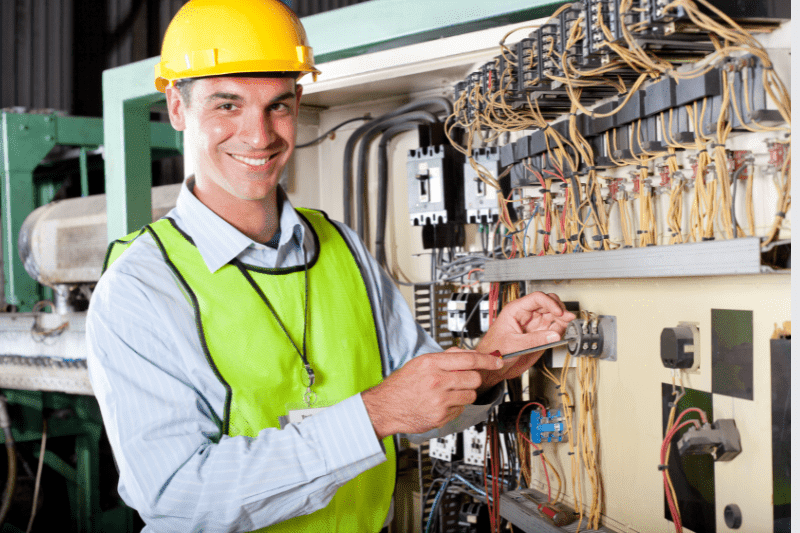Sustainability isn’t just a buzzword; it’s a necessity in addressing climate change. Historically, the building industry has been slow to adopt environmentally friendly practices, contributing to the high energy use and carbon emissions that characterize the sector. In the U.S., buildings account for about 40% of total energy consumption and nearly 30% of greenhouse gas emissions. Despite this, the roofing industry is becoming a key player in driving more sustainable building practices.
As demand for energy-efficient roofing systems and sustainable materials increases, roofing professionals are well-positioned to take advantage of these opportunities. Energy-efficient roof replacements and advanced insulation solutions are changing the industry, offering both environmental and economic benefits. Let’s explore how the roofing sector is evolving and the role sustainable practices play in its growth.
Sustainability in the Roofing Industry
The building sector is gradually shifting towards greener practices, particularly with the increased use of energy-efficient materials. This is especially true in roofing, where energy-efficient roof replacements have become a valuable tool for complying with stricter performance standards at state and federal levels. With roofs playing a significant role in energy consumption and insulation, this trend offers substantial opportunities for roofing professionals.
One of the standout materials in this shift is polyisocyanurate (polyiso) insulation. Polyiso is known for its excellent thermal performance, helping reduce the energy needed to heat and cool buildings. This, in turn, lowers energy costs and reduces carbon emissions. Roofing professionals who offer such high-performance solutions can meet growing market demand while making a meaningful contribution to addressing climate change.
Harnessing the Potential of Insulation Retrofits
Commercial buildings, particularly older ones, offer tremendous potential for energy efficiency improvements. A study commissioned by insulation trade associations highlighted the significant impact roof insulation upgrades can have on reducing energy consumption and emissions.
The study revealed that upgrading roof insulation in commercial buildings could save owners over $65 billion in energy costs over the next 30 years. These upgrades could also eliminate 360 million metric tons of CO₂ emissions—equivalent to the annual energy use of more than 45 million U.S. households. This demonstrates how crucial insulation retrofits can be, not only for improving building performance but also for the environment.
For roofing professionals, embracing insulation retrofits provides an opportunity to meet growing demand for energy efficiency while helping clients achieve compliance with new energy codes. Offering these services can set contractors apart from their competitors, driving business growth while contributing to the broader goal of reducing carbon emissions.
Support for Sustainable Roofing Projects
While energy codes and performance standards have traditionally focused on new construction, more attention is now being directed toward retrofitting existing buildings. Policymakers are recognizing the importance of addressing the energy inefficiency of the country’s current building stock, and resources are being allocated to support retrofits.
For example, the U.S. Department of Energy (DOE) recently launched a $45 million grant program to help states adopt updated building energy codes. This initiative is part of a larger $225 million program established under the Bipartisan Infrastructure Law. The Inflation Reduction Act (IRA) also includes $1 billion to fund building envelope retrofits, with roof replacements being a primary focus for existing commercial buildings.
These investments create significant opportunities for roofing professionals specializing in energy-efficient solutions. By staying informed about available funding and regulatory changes, contractors can take advantage of these opportunities to expand their services and grow their businesses.
The Importance of Environmental Data Transparency
As the demand for sustainable building materials grows, more project teams are prioritizing environmental impacts when selecting products. In response, manufacturers are increasingly providing Environmental Product Declarations (EPDs), which offer third-party-verified information on the life-cycle impacts of materials. This transparency helps contractors and building owners make informed decisions.
For example, the Polyisocyanurate Insulation Manufacturers Association (PIMA) publishes ISO-compliant EPDs for polyiso insulation products. These documents provide data on energy savings and the low global warming potential (GWP) of the materials used. By offering products backed by verified environmental data, roofing professionals can enhance their reputation and build trust with environmentally conscious clients.
Tackling Climate Change: The Roofing Industry’s Role
The roofing industry has already made progress toward sustainability, but there is still much to be done. Climate change continues to accelerate, and the need for climate-resilient buildings is growing. The roofing industry is well-positioned to meet this demand by incorporating energy-efficient products and adopting sustainable building practices.
Roofing professionals must stay informed about new energy policies and climate regulations. By promoting energy-efficient construction methods and educating building owners on the benefits of insulation retrofits, contractors can further contribute to global sustainability efforts while helping their clients save on energy costs.
The roofing industry plays a crucial role in reducing carbon emissions and improving building performance. By adopting sustainable practices, roofing professionals can ensure that their businesses remain competitive in a rapidly changing market.
How Climate Change Affects the Roofing Industry
Climate change is already having a noticeable impact on the roofing industry. More frequent and severe weather events, such as storms, heatwaves, and droughts, are leading to increased demand for roof repairs and replacements. Roofing contractors must be prepared to adapt to these changing conditions by offering materials that enhance the resilience of buildings.
Weather-Resistant Roofing Materials
Extreme weather events, such as severe storms and prolonged heat, are putting a strain on traditional roofing materials. In areas prone to high temperatures, roofing materials must be able to withstand intense heat without deteriorating. In wetter regions, water-resistant roofing solutions are increasingly in demand. Roofing professionals who stay ahead of these trends by offering durable, climate-adapted roofing systems will be better equipped to serve their clients and reduce long-term maintenance costs.
The Growth of Green Roofs
Green roofing systems, which integrate vegetation into the roof structure, are gaining traction, especially in urban areas where space is limited. Green roofs offer a range of environmental benefits, including improved insulation, stormwater management, and the reduction of the urban heat island effect. They also provide green space in densely populated areas, enhancing the quality of life for residents.
For roofing professionals, offering green roofing solutions can help attract clients interested in sustainable building practices. As the demand for eco-friendly construction grows, green roofs present a unique opportunity to offer high-performance, environmentally responsible solutions.
Conclusion: Building a Sustainable Future for the Roofing Industry
The roofing industry is at a turning point. As sustainability and energy efficiency become priorities for both building owners and policymakers, roofing professionals have a unique opportunity to lead the charge in mitigating climate change. By embracing energy-efficient materials, staying informed about policy changes, and prioritizing sustainability in their work, contractors can help reduce their environmental impact while growing their businesses.
The future of the roofing industry is tied to sustainability, and the opportunities are clear. By taking action now, roofing professionals can build a stronger, greener future for their businesses and the planet.
Start your free 14-day trial with Wello Solutions and see how our roofing software can help you build a strong, successful business for the long term.










